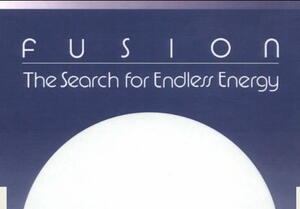A cast of characters
Any great scientific endeavour is first and foremost a human story; the history of people who made the endeavour possible. This is particularly true of the history of fusion. It was written by a "tight fraternity" of men which formed in the late 1950s and "reached across international borders to collaborate."
Robin Herman's 1990 book, Fusion, the Search for Endless Energy, opens with a snapshot of that fraternity of scientists, as they ride tour buses heading from London to Culham where the inauguration of JET was to take place. Most of them had begun their career experimenting on small tabletop fusion devices; they would soon be in front of the 3,000-tonne machine that carried the hopes of the whole fusion community.
Writing in the late 1980s, Herman, an American science reporter, was able to meet and interview most of the "founding fathers" of fusion science and magnetic machine technology. Her account, written for a general audience, makes an easy, entertaining read and an excellent introduction to the basics of "fusion culture."
To tell the history of fusion, Herman calls on a complete cast of characters: Lev Artsimovitch, head of Soviet fusion research from 1950 to 1973; Paul-Henri Rebut, the designer of JET in the mid 1980s; Lyman Spitzner, inventor of the stellarator in 1952; Masaji Yoshikawa, considered as the builder of JT-60; and dozens of others whose contribution to fusion was essential.
Another reason that makes Fusion, the Search for Endless Energy an interesting read is Herman's interest in the minor characters, the fringe players in the great fusion adventure. Argentine dictator Juan Perón, who claimed in 1951 that his nation had built a fusion reactor, is one of them; Bob Guccione, the publisher of Penthouse magazine who invested part of his fortune in private fusion research, is another.
In 1990, the agreement to design ITER had been signed by the US, Japan, the European Union and the Soviet Union, and Conceptual Design Activities were almost complete. What the fusion community was waiting for when Robin Herman's book was sent to print was "an act of political courage and foresight, a concrete commitment to build ITER."
The time for such an act would eventually come—but it would take another decade.
Fusion, the Search for Endless Energy, Robin Herman, Cambridge University Press, 1990.


